Video: Sheffield scientists help finally unlock Einstein's secret of the universe
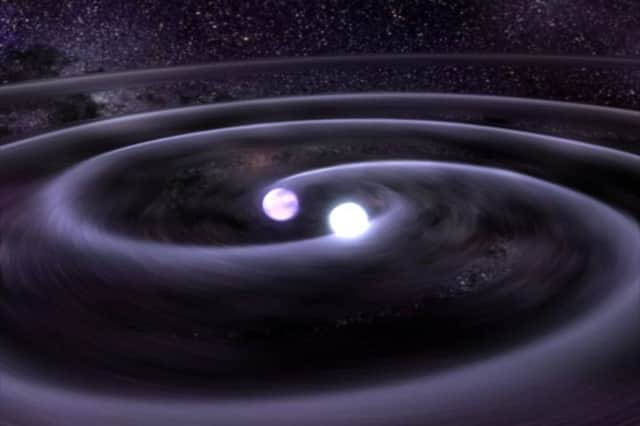

They have helped to prove the existence of space distorting gravitational waves - first predicted 100-years ago by Albert Einstein, but never before seen until now.
Gravitational waves are ripples in space-time, which carry information about space phenomena never before observed.
Advertisement
Hide AdAdvertisement
Hide AdBoffins hope, unlike using a traditional telescope, Gravitational Wave astronomy will now help us to understand some of the most violent events in the cosmos, including exploding stars, colliding black holes, perhaps even the Big Bang itself.
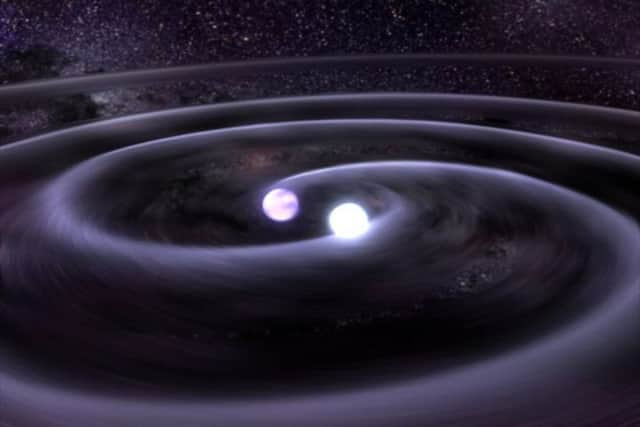

When microwave observations first found faint imprints of the Big Bang, Stephen Hawking called it the “greatest discovery of the century, if not all time”. Today’s announcement is another giant leap for mankind.
Dr Ed Daw, of the University of Sheffield’s PhysicsDepartment, helped with the research leading to the history making global announcement this afternoon at simultaneous press conferences in Washington DC, Louisiana, London and Paris.
Advertisement
Hide AdAdvertisement
Hide AdMaking the announcement at the National Press Club in Washington DC, laser physicist Professor David Reitze, from the University of Florida, said: “Ladies and gentlemen, we have detected gravity waves. We did it.”
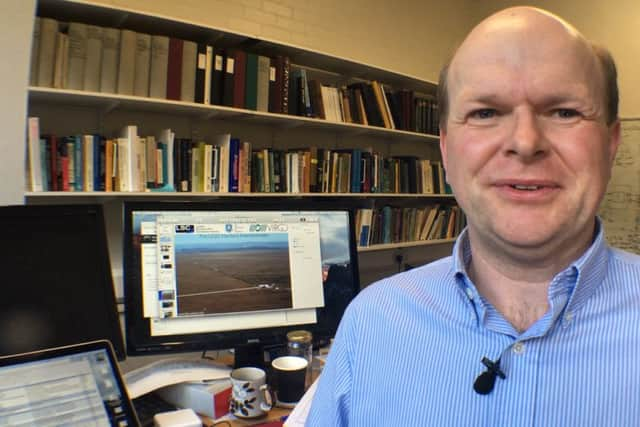

He was greeted with loud applause.
Professor James Hough, from the University of Glasgow, claimed the breakthrough was more important than the discovery of the missing Higgs boson, the so-called “God particle” linked to mass, in 2012.
Speaking in Washington DC, Professor Hough said: “Until you can actually measure something, you don’t really know it’s there.
“I think this is much more significant than the discovery of the Higgs boson. This is the biggest scientific breakthrough of the century.”
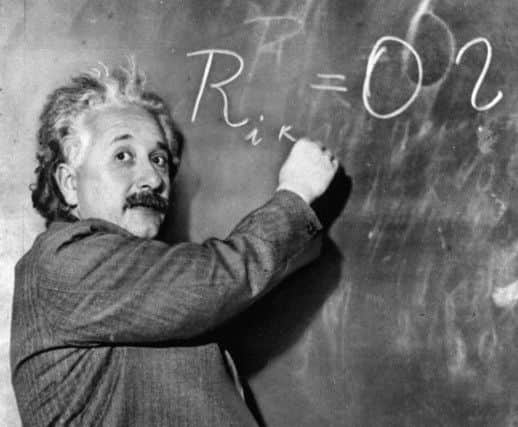

Advertisement
Hide AdAdvertisement
Hide AdTo say gravitational waves are hard to detect is a gross understatement.
The Ligo lasers are designed to detect the way a passing wave causes minute changes in the lengths of the pipes. This results in the two lasers being slightly out of step, creating an interference pattern that can be measured.
The effect is very, very small - the equivalent of about one 10,000th the width of a proton, the heart of an atom.
Anything touched by a gravitational wave would be distorted the same way, even people. But normally the changes are not noticed.
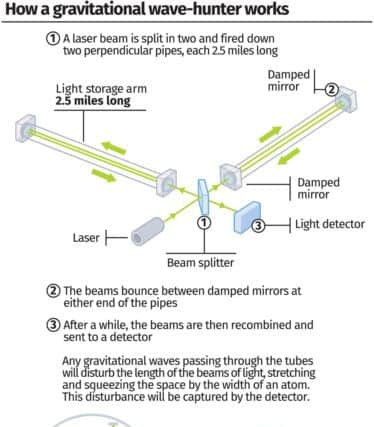

Advertisement
Hide AdAdvertisement
Hide AdGravitational waves are predicted in Einstein’s General Theory of Relativity, published in 1916, which links gravity to the curvature of spacetime by massive objects.
They can be produced in different ways - for instance, by black holes or neutron stars spiralling towards each other on a collision course, a titanic supernova, or exploding star, or even the Big Bang that gave birth to the universe.
The last possibility raises the prospect of peering behind the veil of the Cosmic Microwave Background (CMB), a relic of radiation from about 4,000 years after the Big Bang.
Gravity waves could allow scientists to see what happened even before the CMB came into being.
Advertisement
Hide AdAdvertisement
Hide AdThe gravity waves detected by the Ligo team were from two colliding black holes 1.3 billion light years away.
Professor Martin Hendry, head of the School of Physics and Astronomy at the University of Glasgow, said: “Einstein’s General Theory of Relativity is regarded as one of the most impressive scientific achievements of all time and the existence of black holes is one of the theory’s most startling predictions.


“To see such clear and direct confirmation of this prediction, and moreover that the merger of two black holes converts enormous amounts of mass into the energy of gravitational waves, is a wonderful vindication of Einstein’s masterwork a century after it was written.”
In Sheffield, Dr Daw, who worked for five years at LIGO (Laser Interferometer Gravitational-Wave Observatory) in the USA, said: “Today is a great day for the type of science I do.”LIGO and the collaborators working on it, including the University of Sheffield, are announcing the discovery of gravitational waves for the first time - from a source which went off more than 100 million years ago. We couldn’t be more thrilled with this great announcement. We look forward to the future of the science of the field.”
Advertisement
Hide AdAdvertisement
Hide AdAlbert Einstein’s theory of general relativity first predicted the existence of the mysterious waves in 1916. He believed that cataclysmic events such as two black holes colliding would create the waves, which allow massive objects in space to become curved.
But only now has super sensitive equipment been developed to detect them.
LIGO uses 4km-long pipes to detect the waves, 3000 kilometres apart, in Washington and Louisiana. They pick up passing gravitational waves by measuring how space-time stretches and contracts – by as little as one ten-thousandth the diameter of a proton.
It confirms that massive objects like black holes and neutron stars warp space-time around themselves, and when two collide the distortions ripple outward at the speed of light.
WHAT ARE GRAVITATIONAL WAVES:
1. The waves have nothing to do with the sea
Advertisement
Hide AdAdvertisement
Hide AdGravitational waves are ripples in spacetime - the mathematical model that combines both three-dimensional space and one-dimensional time to plot events.
Theoretically, they are generated by cataclysmic cosmic events such as the collision of black holes or super-dense neutron stars.
2. No one has physical proof they exist
Proposed by Albert Einstein in 1916 as part of his General Theory of Relativity, their existence has never been directly detected.
Scientists have been looking for them ever since and about 40 years ago scientists from the National Science Foundation (NSF) in the United States joined the search.
Advertisement
Hide AdAdvertisement
Hide AdExperts from the California Institute of Technology and Massachusetts Institute of Technology led the design, construction and operation of the NSF-funded facilities.
3. The machines looking for them are huge
The Laser Interferometer Gravitational-wave Observatory (LIGO) is a system of two identical detectors carefully constructed to detect tiny vibrations from passing gravitational waves.
Each is a laser interferometer inside an L-shaped ultra-high vacuum tunnel and operated in unison to detect gravitational waves. One arm of the L alone is 4km long.
The twin detectors are in Livingston, Louisiana, and Hanford, Washington, but research and analysis of data collected is carried out by a global group of scientists.
4. Proof might finally be on the horizon
Advertisement
Hide AdAdvertisement
Hide AdThe NSF and scientists working with LIGO are set to make an announcement on the effort to detect gravitational waves on Thursday.
The exact details have not been revealed but a fact sheet on their website said the press conference was called “to announce they had directly observed gravitational waves that resulted from merging black holes approximately 1.3 billion light-years away and 1.3 billion years ago”.
5. Space enthusiasts are excited
Astrophysicist and author Ethan Siegel writing in Forbes said the announcement will mean that “for the first time, we may be developing eyes for examining the Universe in a way that no living creature has ever examined it before”.
When the LIGO team announced they had news about their project, excited physicists launched the hashtag #chirpforLIGO to post videos of what they imagine a gravitational wave will sound like.